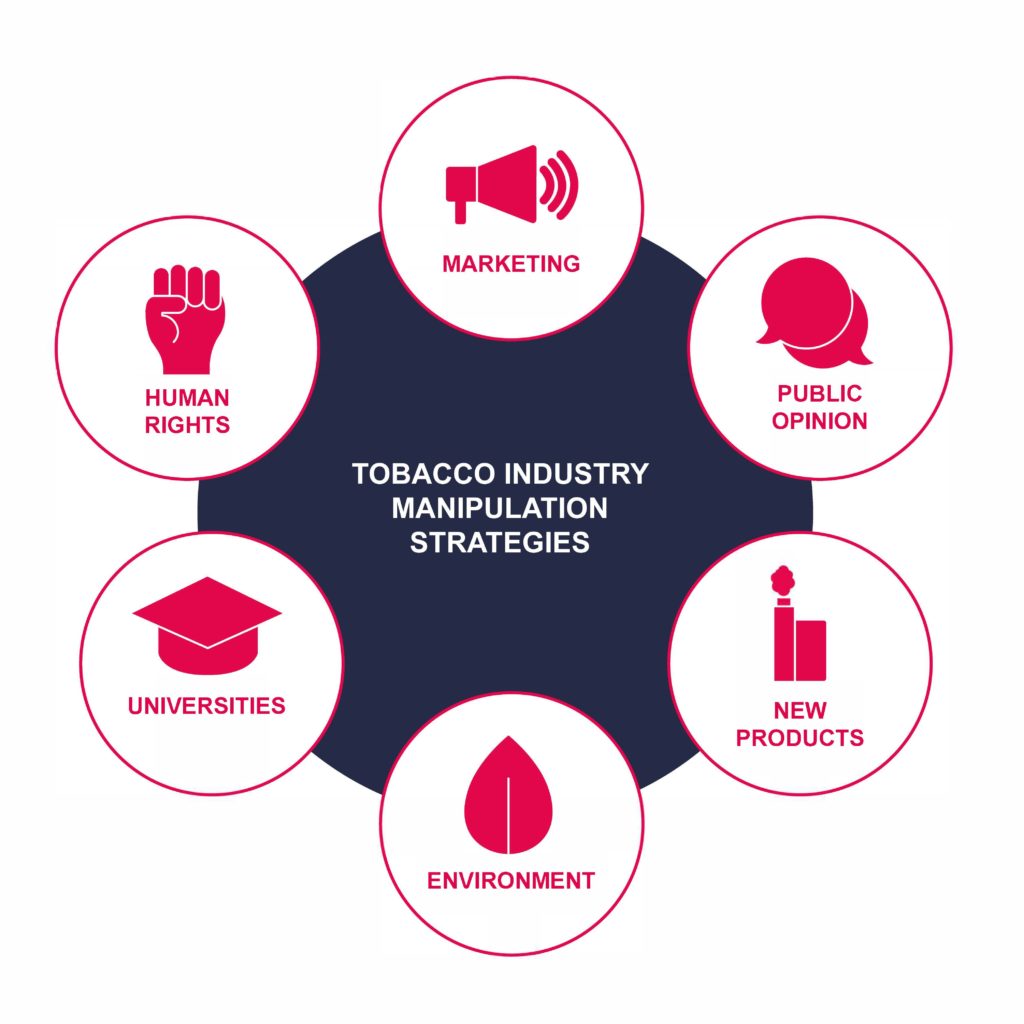Our themes
The tobacco industry pursues a sophisticated global marketing strategy, with the ultimate goal of maximizing and sustaining profits by creating vast markets for its products, with adolescents representing the majority of new consumers. Its tactics are numerous, coordinated between companies, and often complex to understand. Transparency and Truth examines these strategies based on reliable information in order to promote informed, fact-based public debate, focusing on the following six strategic areas:
Marketing The tobacco industry develops marketing strategies specifically designed to appeal to children and teenagers in order to ensure a constant supply of new consumers for its products.
Public opinion The tobacco industry seeks to shape public opinion and influence political and economic decision-makers. By promoting social responsibility initiatives and exaggerating its economic importance, it hinders regulatory measures to protect public health and uses its influence to obtain policies that favor its commercial interests.
New products By bringing a proliferation of new products to market (e-cigarettes, nicotine pouches, heated tobacco, etc.), the tobacco industry is attempting to secure its future by creating a vast market for nicotine. It uses the po indiscriminately.
Universities The tobacco industry exerts a targeted influence on academic institutions by funding research and developing collaborations with researchers. This strategy aims to gain scientific legitimacy, recruit allies within these institutions, neutralize research that threatens its interests, and pollute the scientific literature with studies that perpetuate doubt and ignorance.
Environment Although it causes major environmental damage throughout its production chain, the tobacco industry uses communication campaigns to give itself a “green” image. It diverts attention from its responsibilities by blaming consumers for the environmental impact of its products.
Human rights To increase its profits, the tobacco industry resorts to practices that violate fundamental human rights. At the same time, it attempts to position itself as a committed player in the field of human rights, thus masking the reality of its practices.